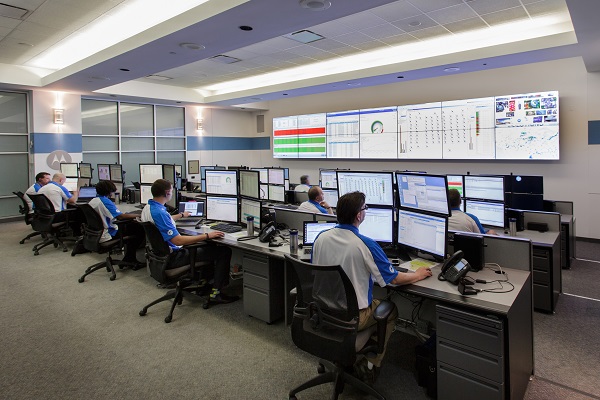In today’s hyper-connected digital landscape, the threat of cybersecurity breaches is ever-present. Cybercriminals constantly evolve their tactics, making it imperative that organizations prioritize security at every stage of their software development and deployment processes. Enter DevSecOps, a methodology that seamlessly integrates development, security and operations.
October is Cybersecurity Awareness Month, and as champions, we are dedicated to making the world more secure. In this blog, we will share how you can join us in this initiative by exploring how DevSecOps engineers can help organizations avoid cybersecurity breaches by fostering a security culture, implementing best practices and leveraging cutting-edge technologies.
Build a “Security First” Culture
Traditionally, security has often been seen as a bottleneck in the development process. It’s typically addressed late in the cycle, leaving vulnerabilities to be found and fixed later. The first step in avoiding cybersecurity breaches is promoting a culture that puts your organization’s security first. It starts with educating and raising awareness among all team members, from developers and operations staff to executives. Here’s how you can do it:
- Training and Awareness: Conduct regular security training sessions for all employees, focusing on the latest threats, best practices and the role each person plays in safeguarding the organization’s assets.
- Security Champions: Appoint security champions within development and operations teams. These individuals act as liaisons between security teams and developers, ensuring that security is considered during every step of the development process.
- Create an Incident Response Plan: Ensure that all team members know what to do in case of a security breach by developing a response plan. Ensure your team regularly updates and improves the plan based on lessons learned from previous incidents. Cyber exercises can test your documented processes so you can see how your teams might respond to better prepare for an actual incident.
Secure the Codebase
DevSecOps engineers should take a proactive approach to securing the codebase throughout the development lifecycle. Here are some essential practices to consider:
- Static Application Security Testing (SAST): Integrate SAST tools into your CI/CD pipeline to scan code for vulnerabilities early in development. Adding automated scans can also help. It can conduct automated SAST scans regularly to identify and address security issues early in the development process.
- Dynamic Application Security Testing (DAST): Use DAST tools to identify security weaknesses by simulating real-world attacks on your applications.
- Automated Scanning: Utilize DAST tools to perform dynamic analysis of applications in runtime.
- Penetration Testing: Conduct automated penetration testing to identify vulnerabilities that may not be apparent in static analysis.
- Dependency Scanning: Regularly scan third-party dependencies for known vulnerabilities and apply patches or updates as needed.
- Regular Checks: Implement tools that regularly scan third-party dependencies for known vulnerabilities.
- Automated Updates: Set up automated processes to update dependencies and libraries with security patches.
- Code Reviews: Implement code review processes, including security checks, to identify and remediate issues before code deployment.
Secure the CI/CD Pipeline
Securing the Continuous Integration/Continuous Deployment (CI/CD) pipeline is crucial for maintaining a strong security posture. Consider the following practices:
- Infrastructure as Code (IaC) Security: Apply best practices to your IaC templates to ensure your infrastructure is resilient to attacks.
- Automated Security Testing: Implement automated security testing in your CI/CD pipeline to catch vulnerabilities and misconfigurations before they reach production.
- Secrets Management: Use secure vaults and secrets management tools to securely store and distribute sensitive information, such as API keys and passwords. Having secure storage can help Implement secure vaults and secrets management tools to store and distribute sensitive information as well. Another important practice is rotating secrets.
Monitor and Respond in Real Time
Real-time monitoring and response are essential components of a strong cybersecurity defense. DevSecOps engineers can take the following steps:
- Continuous Monitoring: Ensure that any threat to your organization is quickly detected by implementing security monitoring. Managed Detection and Response (MDR) services can find potential threats on your mission-critical systems as well as IT networks, endpoints and cloud platforms.
- Real-Time Alerts: Implement continuous monitoring tools that generate real-time alerts for suspicious activities.
- Log Analysis: Analyze logs continuously to identify potential security incidents.
- Threat Intelligence: Stay informed about the latest threat intelligence and integrate it into your monitoring tools to identify emerging threats. One way to do this is by joining a member-focused organization such as the Public Safety Threat Alliance, which shares threat information specific to public safety agencies, municipalities and government organizations.
- Automated Remediation: When breaches happen, it is important to address them to limit the damage they can cause and prevent them from happening in the future. An MDR service can provide automated remediation processes when threats are detected to respond in real time.
You can also incorporate lessons learned from breaches into cyber exercises.
Implement Access Controls and Least Privilege
Controlling who has access to various resources is a fundamental aspect of cybersecurity. DevSecOps engineers can help by:
- Implementing Role-Based Access Control (RBAC): Assign permissions based on roles and responsibilities to ensure that individuals only have access to the necessary resources.
- Role Definition: Work with stakeholders to define different roles within the organization, each associated with specific responsibilities.
- Permissions Assignment: Assign permissions based on roles, ensuring that individuals only have access to the resources necessary for their roles.
- Automation: Implement automated processes for provisioning and de-provisioning access based on role changes.
- Applying the Principle of Least Privilege (PoLP): Limit user and system privileges to the minimum necessary to perform their tasks.
- Audit Existing Privileges: Conduct regular audits of user permissions to identify and eliminate unnecessary access.
- Educating Teams: Work with development and operations teams to ensure they understand and adhere to the principle of least privilege.
- Implementing Automation: Use automation tools to enforce and monitor least privilege, automatically adjusting access based on changing requirements.
- Regularly Reviewing Access: Conduct periodic access reviews to ensure that permissions are current and align with business requirements.
- Scheduled Reviews: Establish a schedule for conducting regular access reviews.
- Documentation: Ensure that access reviews are well-documented, including any adjustments made to access based on the review findings.
Keep Systems and Software Updated
Cybersecurity threats often exploit known vulnerabilities in software and systems. DevSecOps engineers should regularly patch and update systems to address known security vulnerabilities. Engineers should also confirm that vulnerability management processes are in place to identify and prioritize patching efforts.
Conclusion
DevSecOps engineers play a critical role in helping organizations avoid cybersecurity breaches as cyber threats evolve. By fostering a security-first culture, securing the codebase and CI/CD pipeline, monitoring and responding in real-time, implementing access controls and keeping systems and software updated, DevSecOps teams can significantly enhance an organization’s cybersecurity posture. Remember, cybersecurity is an ongoing process, and a proactive approach is essential to stay ahead of emerging threats.




